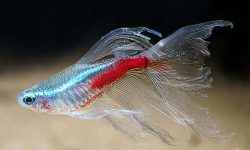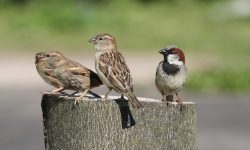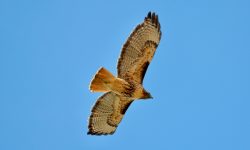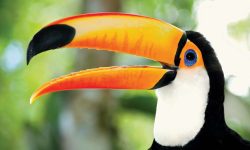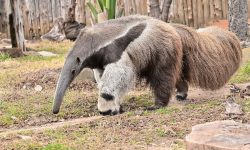Flamingos are one of the most recognizable and elegant birds in the animal kingdom. Known for their vibrant pink feathers, long legs, and distinctive beaks, these birds have captured the fascination of nature enthusiasts and photographers around the world. If you’ve ever seen a group of flamingos, you might have wondered: what is a group of flamingos called?
In this article, we will explore the answer, dive into the symbolism behind flamingos, and discuss the unique characteristics that make them one of the most captivating creatures in the wild.
What Is a Group of Flamingos Called?

A group of flamingos is most commonly referred to as a “flamboyance”. This term perfectly captures the extravagant, vibrant, and eye-catching nature of these beautiful birds. The name “flamboyance” mirrors the flamingo’s striking appearance and their tendency to gather in large, colorful groups, making them one of the most visually stunning birds in nature.
While “flamboyance” is the most widely accepted term, you might also encounter a group of flamingos being called a “colony” or a “stand” in some contexts. However, “flamboyance” has become the go-to word for describing these large gatherings of flamingos, and for good reason.
The Significance of the Term “Flamboyance”
The term “flamboyance” is derived from the word “flamboyant,” which means “showy” or “ostentatious.” It is fitting for flamingos, as they are known for their colorful plumage and graceful posture. Flamingos often congregate in large numbers, creating a spectacle that is impossible to ignore. When seen from a distance, the vibrant pink hues of the birds standing together create a striking image of elegance and beauty. The name “flamboyance” captures this sense of grandeur and liveliness perfectly.
The term also reflects the social behavior of flamingos. Unlike many birds that prefer to remain solitary or form smaller groups, flamingos thrive in large colonies, where they can communicate with one another and engage in social behaviors. The large gatherings provide safety from predators, increase opportunities for breeding, and help flamingos maintain their complex social structure.
Flamingo Social Behavior and Group Dynamics
Flamingos are social birds that prefer to live and travel in large groups. Their behavior in these groups is not only fascinating but also crucial to their survival. These birds are known for their highly organized and cooperative social structure, which is essential for maintaining their flock dynamics.
Flamingo Flocking Behavior
A flamboyance of flamingos can consist of thousands of individuals, particularly during the breeding season. These flocks are often seen standing in shallow waters, feeding on algae and small crustaceans that make up the bulk of their diet. Flamingos are known for their synchronized movements, often feeding in unison and walking in step as a group. This coordinated behavior is essential for maximizing their efficiency in foraging and staying safe from predators.
The Importance of Group Living
Living in large groups provides several benefits for flamingos. First, it helps protect the birds from predators. Flamingos are large and powerful birds, but their young and eggs are vulnerable to a variety of predators, including large carnivores, birds of prey, and even crocodiles. By grouping together, flamingos reduce the risk of individual attacks, as the large number of birds can create a deterrent for potential predators.
Secondly, flamingos engage in mutual grooming, a behavior that helps maintain social bonds and keeps them free from parasites. These social interactions also play a role in the birds’ mating rituals. Flamingos often perform synchronized displays during the breeding season, where they raise their heads in unison and perform a series of ritualized movements. These displays help to attract mates and establish dominance within the group.
Flamingo Colors: Why Are Flamingos Pink?
One of the most iconic features of flamingos is their vibrant pink feathers. But why are flamingos pink, and how does their color relate to their social behavior?
Flamingo Feathers: The Role of Diet
Flamingos are born with gray feathers, and they only begin to turn pink as they mature. The reason for this color change lies in their diet. Flamingos are filter feeders, and they primarily feed on algae, brine flies, and small crustaceans, all of which are rich in carotenoid pigments. These pigments are absorbed into the flamingo’s body and stored in the liver, where they are converted into the pigments that give flamingos their distinctive pink or reddish color.
Interestingly, flamingos that do not have access to a diet rich in carotenoids may appear pale or even white. The intensity of a flamingo’s color can vary depending on the amount of carotenoids in its diet, with flamingos in areas with higher concentrations of these nutrients exhibiting a deeper pink hue.
The Symbolism of Pink
The color pink has various symbolic meanings across cultures. In the case of flamingos, their pink feathers represent beauty, elegance, and vitality. The color also plays a role in flamingo mating rituals. Males often display their vibrant pink plumage to attract females, who are drawn to the brightest and most colorful birds. This visual display is a key part of the courtship process, as it signals a male’s health and genetic quality.
Flamingos in the Wild: Habitat and Distribution
Flamingos are found in both the Eastern and Western Hemispheres, although they are more commonly associated with the warm, shallow lakes and wetlands of Africa, Asia, and the Americas. There are six species of flamingos, each with its own unique habitat preferences and geographical distribution.
Species of Flamingos
The six species of flamingos are:
-
Greater Flamingo (Phoenicopterus roseus): The largest and most widespread species, found in parts of Europe, Asia, and Africa.
-
Lesser Flamingo (Phoenicopterus minor): Smaller in size, with a deep red color, primarily found in sub-Saharan Africa and parts of India.
-
Chilean Flamingo (Phoenicopterus chilensis): Native to South America, particularly in Argentina, Chile, and Bolivia.
-
Andean Flamingo (Phoenicopterus andinus): Found in high-altitude lakes of the Andes mountains in South America.
-
James’s Flamingo (Phoenicopterus jamesi): Native to high-altitude lakes in the Andes.
-
American Flamingo (Phoenicopterus ruber): Found in the Caribbean, Central America, and northern South America.
Flamingo Habitats
Flamingos inhabit shallow, saline or alkaline lakes, lagoons, and estuaries. These environments are rich in the algae and small organisms that flamingos feed on. The warm, shallow waters provide an ideal environment for flamingos to filter feed, while the high salinity levels help to protect them from most predators.
Conservation of Flamingos
Despite their widespread distribution, flamingos face various threats, including habitat destruction, climate change, and human disturbance. In many regions, the draining of wetlands for agriculture and development has led to the loss of crucial flamingo habitats. Efforts are being made worldwide to conserve flamingo populations by protecting these vital wetlands and ensuring sustainable land management practices.
Flamingo Symbolism and Cultural Significance
Flamingos have long held symbolic meaning in various cultures and traditions. Their graceful appearance, striking color, and unique behavior have made them symbols of beauty, elegance, and transformation.
Flamingos in Ancient Mythology
In ancient Egypt, flamingos were associated with the sun god Ra, symbolizing the rise of the sun and the warmth of life. In Native American culture, flamingos are seen as symbols of balance, beauty, and adaptability, reflecting their ability to thrive in both water and on land.
Flamingos in Modern Culture
Today, flamingos are often associated with tropical settings, luxury, and a carefree lifestyle. Their image is frequently used in branding and fashion, evoking a sense of fun and exotic appeal. The flamingo’s vibrant color and graceful stature continue to captivate artists, designers, and nature enthusiasts alike.
Fun Facts About Flamingos
Here are a few fun facts that highlight just how remarkable flamingos are:
-
Flamingos can stand on one leg for long periods, which helps conserve body heat.
-
They are known to “dance” in synchrony during mating displays.
-
Despite their elegant appearance, flamingos are very strong and can live up to 30 years in the wild.
Conclusion: A Flamboyance of Flamingos
So, what is a group of flamingos called? The answer is a flamboyance—a fitting term that perfectly captures the beauty and grandeur of these magnificent birds. From their vibrant pink feathers to their fascinating social behaviors, flamingos are truly one of nature’s most stunning creatures.
Whether you encounter a flamboyance of flamingos in the wild or see one on a tropical postcard, you are witnessing a symbol of elegance, beauty, and grace. Their striking appearance, captivating behaviors, and rich cultural significance make flamingos a bird that will continue to fascinate and inspire for generations to come.

